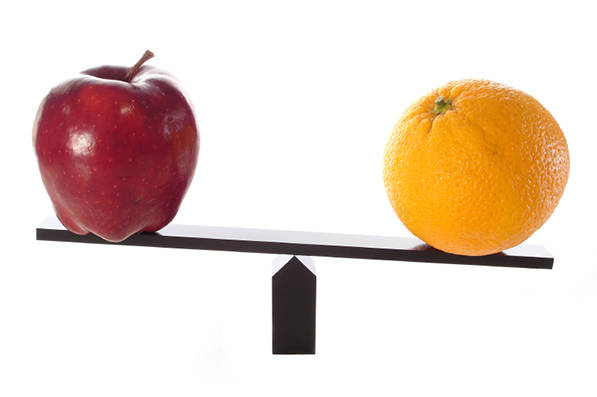
Comparing apples with oranges doesn’t make sense. To make finding the right loan easier, and to make advertised rates as transparent as possible, we have comparison rates.
You’re looking for the best mortgage deal and you see an ad. It shouts ‘3.8% INTEREST!’ and, underneath that seemingly too-good-to-be-true rate, ‘7.9% comparison rate’. What does this mean?
“Because a comparison rate includes all of the fees and charges that can be applied to a home loan, it helps to show customers what the true cost of a loan is. In some instances, lenders offering the lowest rate may not actually boast the cheapest loan, which is what a comparison rate shows,” explains Mortgage Choice Head of Corporate Affairs, Jessica Darnbrough.
“In 2003, an amendment was made to the Uniform Consumer Credit Code (UCCC) that required comparison rates to be included in advertising. This change was made so that customers were not easily misled when it came to home loan interest rates.” The UCCC has since been replaced by the National Credit Code and the comparison rate requirement remains.
This allows consumers to compare apples with apples, to an extent. It does make it much simpler to hold two loan products side by side and, regardless of whether one has a slightly higher interest rate and no fees while the other is a super-low interest rate with high fees, see at a glance which one is the better deal financially.
However, it isn’t always this simple. Fees and charges, the rate at which principle is paid down and the total interest paid over the loan term all change depending on the loan amount and on the term, so you need to delve a little further into how that comparison rate is calculated.
While the comparison rate itself must be as prominently displayed as the interest rate – not buried in tiny fine print – somewhere on the advertisement, there will be a statement along the lines of ‘Comparison rate calculated on a loan of $150,000 for a term of 25 years, with monthly repayments’. If your loan is going to be for $900,000, the comparison rate for your loan will be vastly different.
“In order to get an idea of the comparison rate that applies to a loan, it is a good idea for borrowers to look at the comparison rate for the amount and term closest to the amount and term of their loan,” Darnbrough suggests. “It is always a good idea to look at a comparison rate that is specific to their circumstances, otherwise they can be misled.”
Reproduced with permission from: http://www.mortgageandfinancehelp.com.au/explainer-comparison-rates